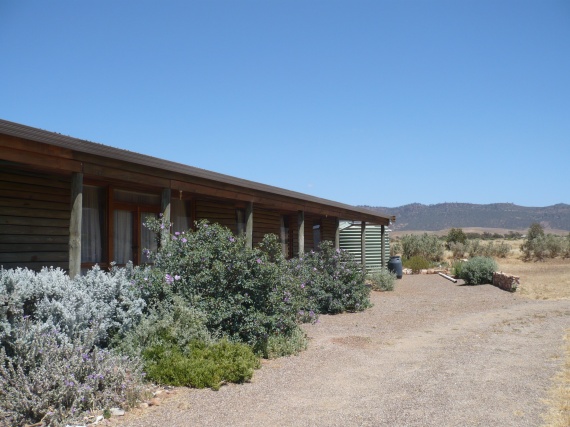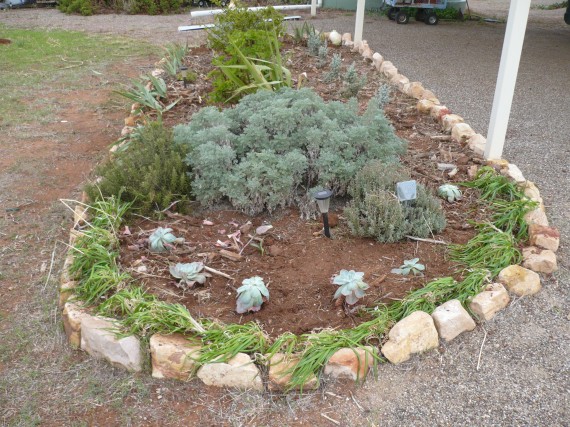7 ways to reduce your bushfire risk in the garden.
Let’s face it, for anyone living in southern Australia (or any gardeners living in the various dry lands around the world), sooner or later you will have to face a fire at some point. But there are quite a few things you can do to protect your property, and because people like lists, I’ve made one!
1. Don’t plant gum trees or conifers close to the house, as lovely as houses nestled in the bush may look. These trees are potential fireballs and Eucalypts are said to burst into flame in high temperatures, ie those caused by an oncoming fire front.
2. Assess your risk. Where do you live? Is it heavily wooded, turned over to vineyards or mainly grassland? Which way do the winds come from? Make sure you get to a local bushfire information night before fire season comes, and find out what you can about your own specific conditions. Here in Quorn my winds come mainly from the southwest, with hot winds coming from the north (the scary ones) and cool ones coming from the southeast some mornings. My main risk here is grassfires caused by lightning strikes. While I shouldn’t have to face a huge fire front, my local deputy fire chief tells me that if the hills were to burn I would be at risk from spot fires caused by embers, and would need to keep an eye on the house (wood) should embers land on it, as we would be within range of ember attack.
My mother in Fairview Park, Adelaide, on the other hand, is mainly alright as the hills are to the east, except if the gully winds blow, as they did the other night. She only found out later that the local pub had been evacuated, but so far has lived to tell the tale.

One day it will be our turn
3. Plant fire retardant plants.
Trees include: Kurrajong, Carob, Peppercorn, White cedar and most deciduous trees. A friend’s father who lived through the Canberra bushfires (January 2003) said a plantation of deciduous trees at his local park saved his house.
Shrubs include: Myoporum, Oleander, Old man saltbush (which surprised me).
Ground cover plants: Gazania (as weedy as it is), Lippia, Myoporum, Agapanthus, and pigface, anything fleshy or full of water.
4. Build that wall. A stone wall is an impenetrable line of defence.
5. Plant a lawn, if you have enough water for it.
6. Choose your mulch carefully, as bark will burn. Spread lots of shale, and keep it free of weeds. Save those woody mulches for the garden beds further away from the house.
7. Keep your property tidy. Keep the grass cut, have your woodpile away from the house, and try not to store too much flammable junk under your verandahs (a note to self here). Keep the gutters free of dead leaves – do this in spring.
It would also be good to get some fire fighting equipment, which I must do, but knowing me, I’ll only get to it when the hills burn, and may find it in short supply on that day.















































